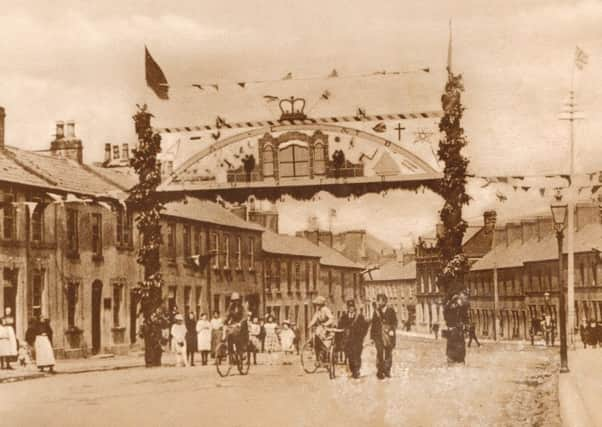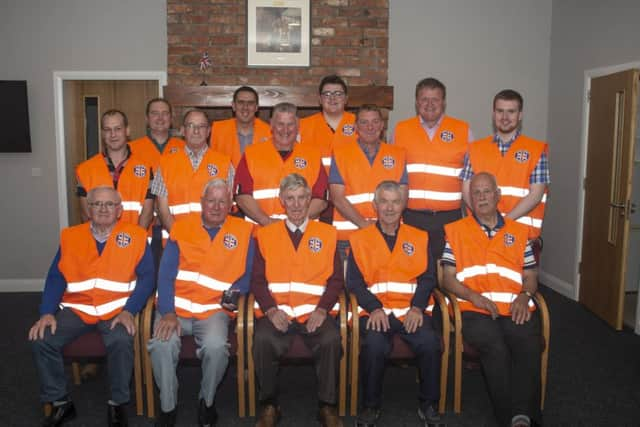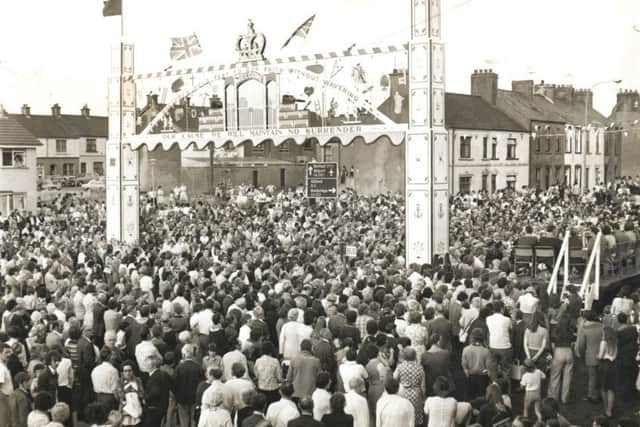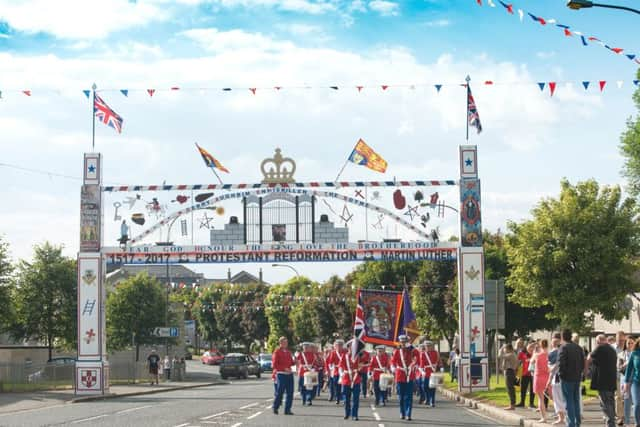An Orange arch that has stood the test of time


Lurgan – like many other towns in Northern Ireland – used to be dominated each summer by a series of Orange arches.
The arches were first put up in 1895 to mark the centenary of the foundation of the Orange Order, but their number has diminished drastically over time.
In Lurgan only one of the town’s eight arches remain.
Advertisement
Hide AdAdvertisement
Hide Ad

Rather than lament the decline the committee of the Queen Street Orange Arch have put together a new calendar celebrating the life and times of the structure.
Bertie Dowey, who has been secretary of the committee for 44 years, said: “It is recorded in the archives of the local press that some arches including Queen Street were erected in 1893.
“What I think is, coming up to the centenary some of the country lodges moved early to make sure they were ready.
“We’re taking the centenary in 1895 as the official start of the arch, so this calendar is marking 125 years of the Queen Street Orange Arch.”
Advertisement
Hide AdAdvertisement
Hide Ad

The earliest picture of the arch came from Bertie’s late mother’s home: “I’m going by the housing and the buildings, the old gas lamps, the old Daisy Bells (bicycles) and by the dress – I reckon it’s 1900.”
Another picture taken just before the start of World War One shows men in Ulster Volunteer Force uniform at the arch while there is another photo of a crowd of residents gathered at the arch in 1944.
Bertie said: “My mum and my sister are in that photo. I got it blown up so you could better make out the faces. I know quite a few of the names of the people pictured.”
Of the decrease in the number of arches across Northern Ireland, Bertie said: “They’re falling away. There used to be eight in Lurgan, now there’s one.
Advertisement
Hide AdAdvertisement
Hide Ad

“It’s not just Lurgan, it’s happening all over Northern Ireland.”
A lot of the arches in Lurgan had been located in places like Victoria Street and William Street where the demographic has changed and the once Protestant areas have become Catholic-dominated.
The Queen Street Arch was constructed from wood, painted and erected by residents within the Ballyblaugh townland, known by most as Blaugh (pronounced Block).
Detailing the history of the arch, Bertie said: “The poles at each side of the first arch, to give them a decorative look, were wrapped with laurels, sometimes ivy and wild flowers.
Advertisement
Hide AdAdvertisement
Hide Ad“After a further few years the poles were wrapped with red cloth one yard wide. Orange lilies, rhododendrons, Sweet Williams and laurels were places in the overlay.
“The laurels and wild flowers were donated by Lord Lurgan from his estate (now Lurgan Park). Decorative wooden boxes were first added in the 1950s. The first boxes were threepenny bit shaped.”
He continued: “The curtain banner which hangs under the arch used to be donated by local linen factories.
“It is normally 45 foot long, dyed orange with blue fringing. It was cut to shape by the local master tailor and in the light summer evenings the ladies gathered on the street to hand stitch the fringing to the curtain under the tailor’s watchful eye.
Advertisement
Hide AdAdvertisement
Hide Ad“If the weather was bad the work was carried out in the band room.
“When the old curtain was up it would last five or six years before the dye started to run.
“It would be taken down, re-dyed and stitched back up again by the women in the street. You would get maybe 10 or 15 years out of a curtain.
“Lurgan used to be coming down with linen factories who would donate to the arch. Since the mid 1990s good linen has become very costly. We use PVC now which lasts about two to three years.”
Advertisement
Hide AdAdvertisement
Hide AdBertie told an interesting story demonstrating how the method of putting up the arch has changed significantly: “In the pre-1960s, the men worked long hours, 12 hour days, mostly in linen factories, then many would have gone to the pub on a Friday night.
“To get the man power they’d have to wait until the pubs closed to put the arch up.
“The wooden arch was erected late on Friday evening with residents watching and finished on Saturday.”
Even after a new arch made from steel and aluminium replaced the old arch in 1976 the process of putting it up was still a manual one.
Advertisement
Hide AdAdvertisement
Hide AdBertie said: “We used to have a man in charge and he wouldn’t let a digger or equipment near it. Everything was done off ladders. I remember standing on top of it many a time.
“It’s about 28 or 30 foot high. When you’re walking across the top it’s only about four inches.”
He added: “Now with the use of hydraulic machinery, since the mid 1990s the arch is now erected in three to four hours.”
Having survived more than 80 years the wooden arch in Queen Street came down for the last time in 1974.
Advertisement
Hide Ad